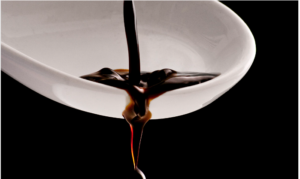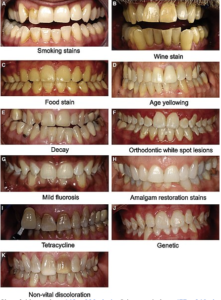The Hidden Culprits of Dental Discolouration: Foods That Stain Your Pearly Whites
Unveiling the Teeth-Staining Culprits Lurking in Your Daily Diet

Foods that stain teeth
A bright, white smile is often considered one of a person’s most alluring features. Yet, maintaining that luminous sparkle can be more challenging than avoiding a second cup of coffee. With daily habits and the food we consume playing a pivotal role, it’s time to explore those tasty yet tarnishing agents that can mar our once-gleaming teeth.
In this detailed exposé, we’ll dissect the oral impact of commonly consumed foods and drinks, highlighting the science behind how they discolour our teeth. We’ll then arm you with strategic defensive measures to safeguard your dental aesthetics while still relishing life’s culinary pleasures.
Key Takeaways
Before we dig into the intricacies, here are the significant nuggets:
- Coffee and red wine are chief suspects, but several lesser-known foods can stain teeth.
- Proper dental hygiene can mitigate the impacts of discolouration, but adjusting your diet plays a critical role in maintaining a radiant smile.
- The severity of stains can vary based on the porosity of your enamel, which means these culprits can have differing degrees of impact on individuals.
- Simple food choices and oral care adjustments can prevent or minimise staining.
- Professional dental treatments, from polishing to veneers, offer solutions if the staining irritates.
Identifying the Stain Starters: A Primer on Tooth Discoloration
Understanding Extrinsic vs Intrinsic Stains
As a starting point, it’s crucial to distinguish between extrinsic and intrinsic tooth staining. Extrinsic discolouration occurs on the surface of the teeth, typically because pigment particles adhere to the enamel. Beverages like coffee, tea, cola, and deeply coloured foods like blueberries and curry are prime instigators.
Conversely, intrinsic staining happens when the inner structure of the tooth, or dentin, darkens or develops a yellow tint, often due to exposure to excess fluoride, tetracycline antibiotics, or trauma. This type of discolouration requires a more substantial intervention, such as professional bleaching or cosmetic dentistry procedures.
The Conspicuous and the Covert Stainers
The Staining Superstars
While it’s common knowledge that certain beverages such as coffee, red wine, and black tea can cast a brownish tinge on your smile, several foods are flying under the radar as teeth-tarnishing troublemakers. Here’s a peek at the less apparent suspects:
- Balsamic Vinegar
- Tomato Sauce
- Berries, especially blackberries and cranberries
- Beets
- Soy Sauce
- Turmeric
- Popsicles and Hard Candies
These concealed culprits often contain intense natural pigments and acids that can soften enamel, making it more susceptible to staining.
The Sugary Culprits and Oral Hygiene
Sugary foods allow bacteria in the mouth to thrive, producing acid that attacks tooth enamel and leads to demineralisation. Sticky candies and sugary snacks contribute to tooth decay and provide a surface for stains to adhere more firmly. A correct oral hygiene, that includs brushing and also flossing, is essential to remove these potentially harmful particles.
The Defense Diet: Foods that Buff Those Blues Away
Crunch, Munch, Scrape! Foods that Clean While You Chew
Certain foods can act as natural cleaners for your teeth. Hard, crunchy vegetables and fruits like apples, celery, and carrots have high water content and stimulate saliva production, the mouth’s natural defence mechanism. This increased salivary flow helps to wash away stains and protect tooth enamel.
The Calcium Crusaders
Dairy products like milk, cheese, and yoghurt are rich in phosphates and calcium, which can help strengthen teeth and fortify enamel. These dairy delights also contain lactic acid, which can help protect against tooth decay, another secondary effect of many teeth-staining foods.
Eating the Rainbow, Not the Rainbow on Your Teeth
Finally, a diet rich in colourful fruits and vegetables provides ample antioxidants and nutrients that support oral health. Skip processed juices and opt for natural, textured produce. The fibre in these foods can also help scrub away stains from teeth.
Post-Plaque Pleasantries: Ensuring Your Smile Shines On
Advice for Keeping Discoloration at Bay
In addition to being mindful of what you eat, regular brushing with a whitening toothpaste, distinct from bleaching products, can help remove surface stains. Flossing is equally important to reach those interdental areas where stains tend to hide.
When brushing, pay attention to technique. Gentle, circular motions distribute the paste effectively, but too much pressure can erode enamel. Remember to devote at least two minutes per session to every tooth.
Professional Help and Home Care
Should the stains persist or if you want to enhance your natural shade, professional dental cleaning will significantly rejuvenate your smile. For at-home touch-ups, whitening strips and gels offer access to similar treatments, though the guidance of a dentist is paramount to their safe and effective use.
The Big Brush Off on Staining Myths
Separating Fact from Fiction
One prevailing myth is brushing your teeth with strawberry and baking soda mixtures will whiten them. The acidic nature of the strawberries can do more harm than good, and minimal scientific evidence backs this as an effective whitening method. The safest path to a brighter smile is through professional treatments or over-the-counter products recommended by dentists.
Timing of Consumption and Hydration Hacks
It’s not just what you eat but when you consume these staining foods. Sipping water during and after meals can help wash away immediate stains. Also, planning your indulgences around mealtimes can limit exposure, as increased saliva and chewing reduce the time it takes for stains to form.
FAQ - Domande frequenti
Esistono cibi quotidiani particolari che possono ridurre l’effetto delle macchie?
Cosa pensare dei coloranti artificiali negli alimenti?
Quanto tempo devo aspettare perché i miei denti si sbianchino, dopo aver apportato queste modifiche alla mia dieta?
Le setole e i tipi specifici di spazzolino influenzano le procedure di sbiancamento?
Dovrei eliminare completamente alcuni cibi, o è sufficiente la moderazione per scongiurare il pericolo di macchie?
Che consigli potete dare per eliminare abitudini nocive come il caffè o il fumo?
The Final Flourish: Protecting Your Smile's Sparkle
Discolouration can be gradual, often going unnoticed until the damage is done. By cultivating awareness of the staining potential in your diet and employing proactive oral hygiene practices, you can guard against discolouration and maintain your most radiant, confident self.


